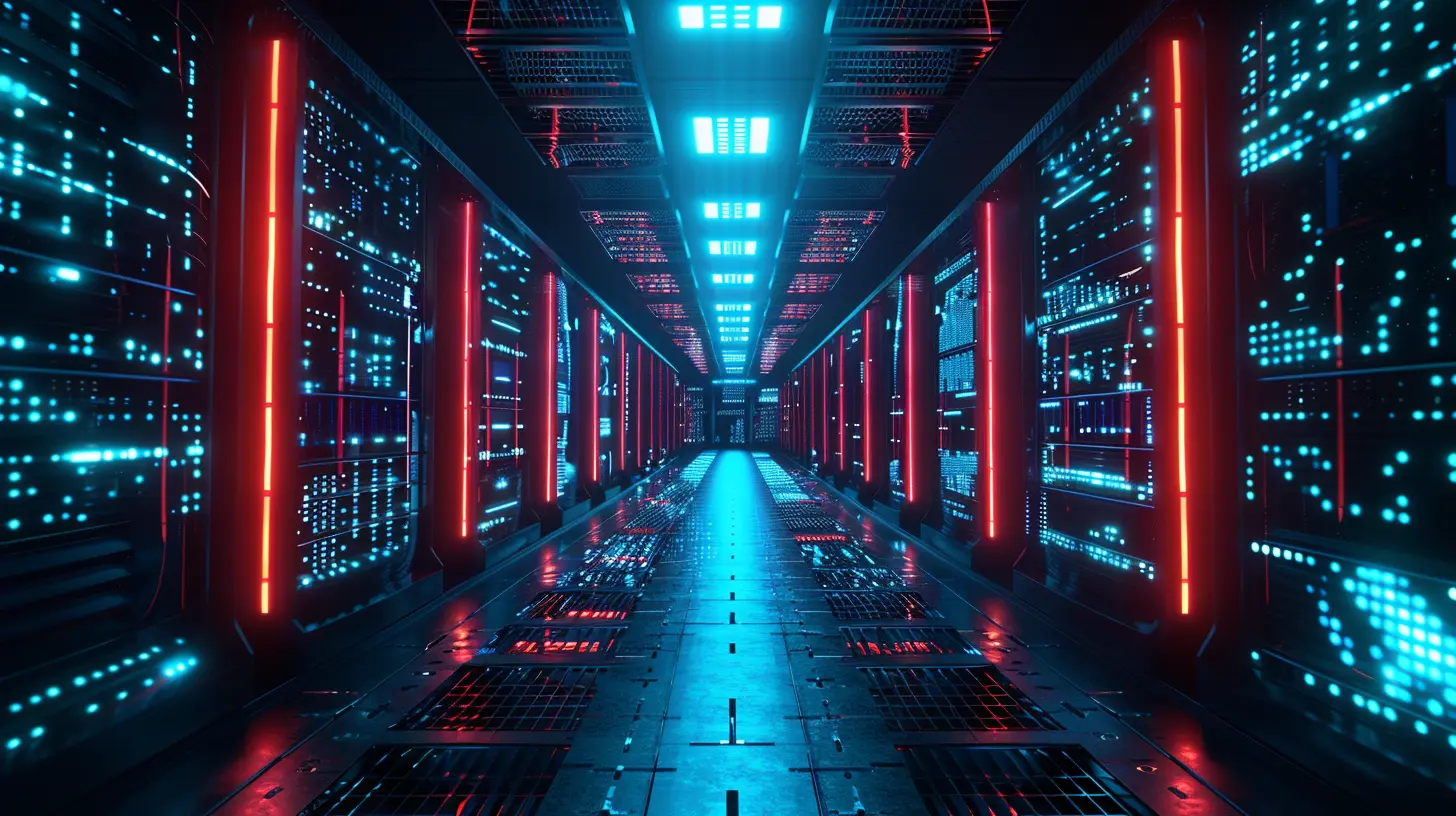4 December 2024
In a world where technology evolves faster than a smartphone's software update, one trend that stands out is the push for sustainability. We’re no longer just hungry for the latest gadgets and tech toys. Now, we’re also craving innovations that help keep our planet healthy. The future of sustainable tech is bright, exciting, and, most importantly, necessary. But what’s next in green innovation? What should we expect from the tech world as it embraces eco-friendly practices and green technologies?
Grab your favorite eco-friendly beverage—maybe a plant-based latte or some kombucha—because we’re about to dive deep into the future of sustainable tech. And trust me, it’s full of surprises.

The Rise of Eco-Conscious Consumers
Let's face it—people are becoming more aware of their environmental footprints. Whether it's skipping plastic straws or driving electric cars, consumers are demanding products that not only serve their needs but also respect Mother Nature. This shift in demand has forced the tech world to sit up and take notice. Companies that once focused solely on profit margins are now having to think about sustainability.Why? Because eco-conscious consumers are willing to invest in companies that align with their values. If you're in the tech industry and you're not thinking green, you're getting left behind. In short, sustainability isn’t just a trend—it’s the future.

Green Tech Innovations: What’s Happening Now?
Before we jump into what’s next, let’s take a moment to appreciate what’s already happening in the world of green innovation. The tech industry has made some impressive strides in recent years. Here are a few current developments that are setting the stage for bigger things:1. Renewable Energy-Powered Data Centers
Data centers are the backbone of the internet and our digital lives. But they’re also notorious for consuming massive amounts of energy. Enter renewable energy. Companies like Google, Microsoft, and Amazon have already started investing heavily in making their data centers more sustainable. These tech giants are using solar, wind, and even geothermal energy to power their facilities.2. The Rise of Electric Vehicles (EVs)
Electric vehicles aren’t just for early adopters and Tesla fanatics anymore. With companies like Ford and GM rolling out electric options, EVs are becoming mainstream. They’re not just reducing emissions; they’re also sparking innovation in battery technology and charging infrastructure, which will have ripple effects across other industries.3. Energy-Efficient Devices
Remember when your phone battery would die after just a few hours? Thanks to advances in energy-efficient processors and smarter software, we’re seeing devices that last longer on a single charge. Tech companies are increasingly designing gadgets with energy consumption in mind, which not only helps consumers but also reduces overall energy demand.4. Recycling and Reusing Tech Materials
E-waste is a growing problem, but there’s hope. Tech companies are beginning to focus on recycling materials from old devices to build new ones. Apple, for example, has committed to using 100% recycled materials in some of its products. This shift not only reduces waste but also lessens the need for mining raw materials, which can be incredibly damaging to the environment.
What’s Next in Green Innovation?
So, where do we go from here? The future of sustainable tech is all about thinking bigger, smarter, and greener. Here’s a glimpse of what might be in store:1. AI-Driven Sustainability Solutions
Artificial intelligence (AI) is already transforming industries like healthcare, finance, and entertainment. But what about sustainability? In the near future, we can expect AI to play a massive role in helping us solve environmental challenges. Imagine AI systems that can optimize energy usage in real-time, reducing waste and saving resources across entire cities.For example, smart grids powered by AI could predict when and where energy is needed most, ensuring that renewable energy sources like solar and wind are used efficiently. AI can even help farmers optimize water usage and reduce pesticide use, creating more sustainable agricultural practices.
2. Sustainable Supply Chains
Right now, supply chains are incredibly complex and often involve environmentally harmful processes. But the future of tech will see a shift toward sustainable supply chains. With the help of blockchain technology, companies will soon be able to track every step of the production process, ensuring that environmentally friendly practices are followed.Plus, consumers will have more visibility into where their products come from, allowing them to make more informed choices. Imagine being able to scan a barcode on your next smartphone to see where each component was sourced and whether it was ethically and sustainably produced.
3. Biodegradable Electronics
Yes, you read that right: biodegradable electronics. E-waste is a serious issue, with millions of tons of discarded electronics piling up in landfills around the world. But what if your next gadget could simply decompose when you're done with it?Scientists are already working on creating biodegradable materials for electronics. These devices could break down in a way that’s safe for the environment, reducing the burden of e-waste. It’s a game-changer, especially when you think about the short life cycles of current tech products.
4. Green Energy Storage
While renewable energy is certainly important, storing that energy efficiently is equally crucial. Right now, battery technology is advancing, but it still has a long way to go. The future holds the promise of green energy storage solutions that could revolutionize how we store and use renewable energy.Solid-state batteries, for example, are one area of interest. These batteries are more efficient, have longer lifespans, and are safer than traditional lithium-ion batteries. And while they're still in the development phase, solid-state batteries could be the key to unlocking a truly sustainable energy future.
5. Circular Economy in Tech
The circular economy is all about creating systems where products are designed to be reused, repaired, and recycled, rather than thrown away. In the tech industry, this could mean products that are easier to upgrade, repair, and recycle. Imagine a smartphone that you could easily disassemble and upgrade, rather than tossing it out when it becomes outdated.Several tech companies are already exploring this concept. Fairphone, for example, builds smartphones that are modular and easily repairable. As consumers become more eco-conscious, we can expect more tech companies to adopt circular economy principles.
6. Sustainable 3D Printing
3D printing has already revolutionized industries like manufacturing, but its sustainable potential is just starting to be tapped. In the future, we could see 3D printing used to create everything from eco-friendly building materials to biodegradable gadgets. By using sustainable materials and reducing waste, 3D printing could play a significant role in the green tech revolution.Additionally, 3D printing allows for localized manufacturing, which can reduce the environmental impact of transporting goods around the world. Fewer trucks on the road? Yes, please!

Challenges to Overcome
Of course, the future of sustainable tech isn’t without its challenges. While green innovation is exciting, we need to be realistic about the hurdles we’ll face:1. Cost
Let’s be honest: going green often comes with a higher price tag, at least initially. Research and development for sustainable tech can be expensive, and the costs are often passed on to consumers. However, as more companies adopt green practices and scale their operations, we can expect prices to come down over time.2. Consumer Mindset
While eco-conscious consumers are on the rise, not everyone is willing to pay more for green tech. Changing consumer habits is one of the biggest barriers to widespread adoption of sustainable technology. It’s going to take time and education to shift the mindset of the masses.3. Infrastructure
For some green innovations, like electric vehicles, the infrastructure simply isn’t there yet. Charging stations, for example, are still relatively scarce in certain parts of the world. Building out the necessary infrastructure will take time and investment.4. Regulation
Governments around the globe will play a crucial role in shaping the future of sustainable tech. Regulations and policies will need to incentivize green innovation while also ensuring that companies are held accountable for their environmental impact.Conclusion: A Greener Tech Future
The future of sustainable tech is filled with possibilities. From AI-driven solutions to biodegradable electronics, green innovation is poised to change the way we live, work, and play. While challenges remain, the momentum toward sustainability is undeniable.It’s not just about creating the coolest gadgets anymore. It’s about creating technology that works in harmony with the planet. And that’s something we can all get behind, right?
So, what’s next in green innovation? The answer is simple: whatever we make of it. As long as we keep pushing the boundaries of what’s possible, the future of sustainable tech is limitless. And hey, maybe one day we’ll even have solar-powered hoverboards—because why not dream big?











Maxwell McCabe
Oh great, just what we need—more eco-friendly gadgets to save the planet while we binge-watch cat videos. Can’t wait for my solar-powered toaster that only works on sunny days! Who knew saving the Earth could come with such a stylish edge? Sign me up!
March 6, 2025 at 7:42 PM